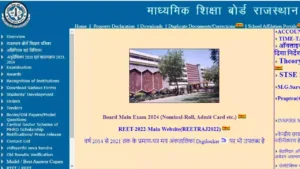India boasts a rich tapestry of traditional arts and crafts, passed down through generations with meticulous care. From the delicate weaves of Kanchipuram silk sarees to the intricate inlay work of Marodi carpets, these crafts are more than just products – they’re stories woven into threads and etched onto metal. But in a world driven by mass production, these age-old traditions face the challenge of staying relevant and ensuring the livelihoods of the artisans who keep them alive.
Here’s where skill upgradation comes in – a potent blend of preserving heritage and propelling traditional crafts into the future. It’s about empowering artisans with new techniques, design sensibilities, and business acumen, ensuring their crafts not only survive but thrive.
Sharpening the Tools: Modern Techniques for Traditional Crafts
Skill upgradation isn’t about replacing time-tested methods. It’s about building upon them. Imagine a weaver in Varanasi learning to use a digital loom alongside her traditional handloom. This empowers her to create intricate designs with greater efficiency, while retaining the soul of her craft. Similarly, a metalworker in Jodhpur could be introduced to computer-aided design (CAD) software, allowing for more precise patterns and faster production.
These modern techniques not only enhance productivity but also open doors to experimentation. Artisans can create contemporary variations of their traditional pieces, infusing them with a modern aesthetic. A dash of digital printing on a silk saree or a touch of laser engraving on a wooden craft can create unique pieces that resonate with a wider audience.
Design Savvy: Understanding the Market and Modern Preferences
Traditionally, craft designs were passed down through families, with little room for adaptation. Skill upgradation workshops can introduce artisans to design principles, colour theory, and market trends. This empowers them to understand what resonates with modern consumers. They can learn to adapt their pieces to suit contemporary tastes while staying true to the essence of their craft.
For instance, a traditional brass lamp maker in Kanyakumari could learn about contemporary home decor trends and design lamps that seamlessly blend into modern living spaces. This not only ensures the relevance of their craft but also opens doors to new markets.
Business Brains: Building a Sustainable Future
Skilled hands are essential, but to thrive in today’s competitive landscape, artisans also need to be equipped with business skills. Skill upgradation programs can provide training in areas like marketing, accounting, and e-commerce. This empowers artisans to price their products competitively, understand customer needs, and navigate the online marketplace.
Imagine a generations-old pottery studio in Khurja learning about social media marketing. They can showcase their unique pieces online, reaching out to a global audience and establishing their brand identity. This not only increases their income but also empowers them to take control of their narrative and build a sustainable future for their craft.
Reviving the Legacy: Collaboration and Community
Skill upgradation isn’t a solitary pursuit. It thrives on collaboration and community. Workshops can create a platform for experienced artisans to mentor younger generations, ensuring the knowledge transfer continues. Additionally, government initiatives, NGOs, and design institutes can play a crucial role in facilitating skill development programs and providing artisans with the resources they need.
By fostering a collaborative environment, artisans can learn from each other, share design inspirations, and even explore possibilities of co-creation. This not only strengthens the craft community but also injects a fresh wave of energy and innovation into age-old traditions.
In conclusion, skill upgradation is the bridge that connects the rich heritage of traditional Indian crafts with the demands of a modern world. By equipping artisans with the necessary tools, knowledge, and business acumen, we can empower them to not only preserve their legacy but also create a thriving future for themselves and their crafts. This ensures that the stories woven into these exquisite creations continue to be told for generations to come.














